Fruit Scones
There’s nothing quite like warm Fruit Scones fresh from the oven – golden on the outside, fluffy in the middle, and bursting with sweet, juicy fruit. I’ve been on a not-so-secret mission for a while now. One that has involved some pretty rubbish bakes, and some which are good but not quite good enough. Recipes…
There’s nothing quite like warm Fruit Scones fresh from the oven – golden on the outside, fluffy in the middle, and bursting with sweet, juicy fruit.
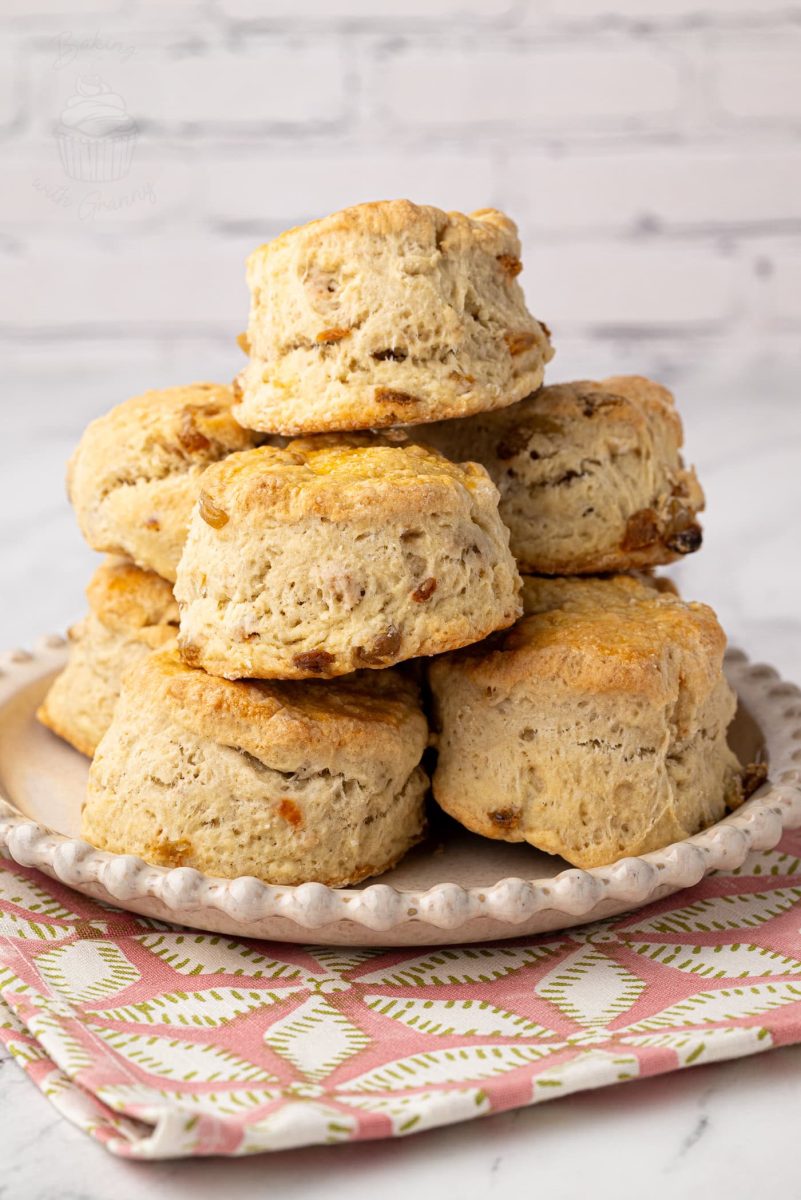
I’ve been on a not-so-secret mission for a while now. One that has involved some pretty rubbish bakes, and some which are good but not quite good enough. Recipes tweaked and altered to within an inch of their lives… This mission I speak of? The perfect Fruit Scones!
Scones are something which appear simple on the surface, but getting them perfect is a bit of a science. It’s something that Granny seems to have done, but when you ask her for the elusive perfect Scone recipe, the answer is usually, “I don’t really have just one recipe.” Oh, no! Granny just bungs it all together in a bowl and lets her magical baking hands do all the work.
It became clear fairly early on in my mission to perfect the humble Fruit Scones, that I have not inherited the magical baking hands, and if I too was going to succeed at scones, I’d need a recipe that really does work. I tried it all; self-raising flour, plain flour, egg, no egg, butter, margarine…
But with much trial and error, I truly believe this is the very best, easy Fruit Scones recipe.

Ingredients for traditional Fruit Scones:
Self-raising Flour
Scones are generally quite dense in texture, but there are a few elements in the ingredients that help prevent them from being like biting into a rock. One of those is the raising agents. Self-raising flour already has a raising agent incorporated…as the name would suggest.
Baking Powder
As well as the raising agent in the flour, baking powder adds a bit of lift to scones.
Baking powder is a convenient choice as it is a ready-mixed leavening agent, generally made of bicarbonate of soda and cream of tartar (usually some cornflour too).
Caster Sugar
In terms of scones, Fruit Scones would fall into the “rich scone” category. Traditionally, this would also mean the addition of an egg alongside the sugar; however, in this recipe, the caster sugar is all that is called for.
Margarine or Butter
In terms of flavour, butter is always king when it comes to baking scones. However, when it comes to texture, a decent block margarine can be just as good. You want your butter/margarine to be cold, though, as this will allow you to crumble it into the flour & sugar without it turning to mush; instead, you want it to make a sand-like consistency. It is these little “grains” of buttery sand that will melt during baking, leaving a beautiful air-pocketed texture within your scones.
Milk
The liquid that brings it all together. You can use whichever milk you prefer, but full-fat milk produces the richest scones. Dairy-alternative milks also work great in scones, with soya being my personal favourite.
Yoghurt or Sour Cream
Not a traditional addition for scone recipe purists, however, the choice to add yoghurt or sour cream to your recipe goes beyond taste – more so, it is science! The acid in the yoghurt or sour cream reacts with the alkaline in the baking powder, causing a chemical reaction. For those like myself who never excelled in chemistry…it basically makes some bubbles in your batter and, in turn, an even lighter-textured scone.
If using yoghurt, the choice of type is yours. A plain yoghurt is great, as is a soya yoghurt or a coconut yoghurt (what is used in these photos). Generally speaking, you want to use a yoghurt that isn’t too sweet or flavoured.
Sultanas
Technically, you could use whatever dried fruit you like in a fruit scone, but my personal favourite is sultanas. Raisins, currants, cranberries, dates…all good options too.
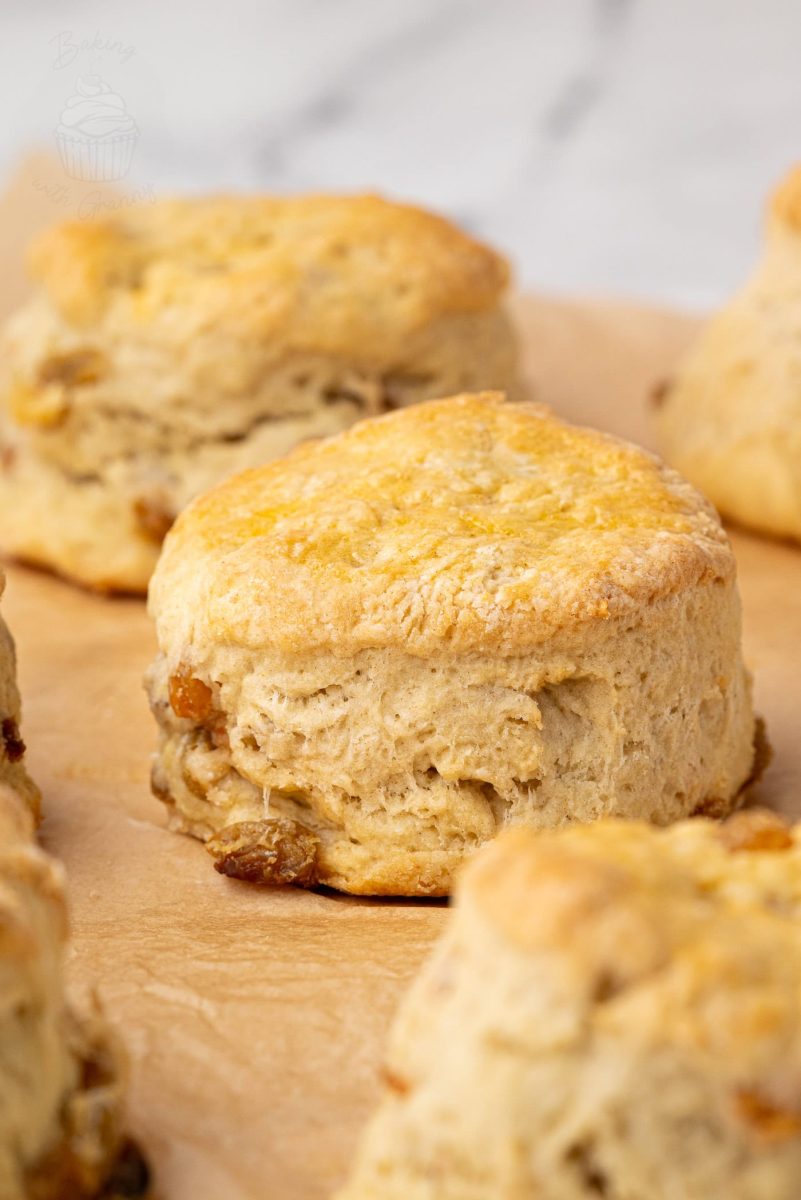

Top Tips for homemade Scones:
• For great scones, you want cold ingredients and a hot oven. Use butter that is a little cold, and ensure you fully preheat your oven.
• Try to get as much air into your dough by sifting the dry ingredients from a bit of height and raising your fingers as you mix the butter.
• Scones require a soft touch, so don’t be too rough with your mixing and kneading.
• Put down the rolling pin! Simply stretch out your dough with your hands. And always leave it a little thicker than you think you should.
• When you cut your scones from the dough, DO NOT twist your cookie cutter. This will twist the edges of the dough and prevent them from rising as well. And by doing so, you will make Granny want to cry.
• Always leave your scones to rest before baking. This lets the gluten in the flour rest. 10 minutes is ideal, but if you can do longer, even better.
• A beaten egg gives the best colour to scones when brushed on top, but milk is also fine if you’re out of eggs. Just be careful that you don’t let it run down the sides of your scones, or it could affect the rise.
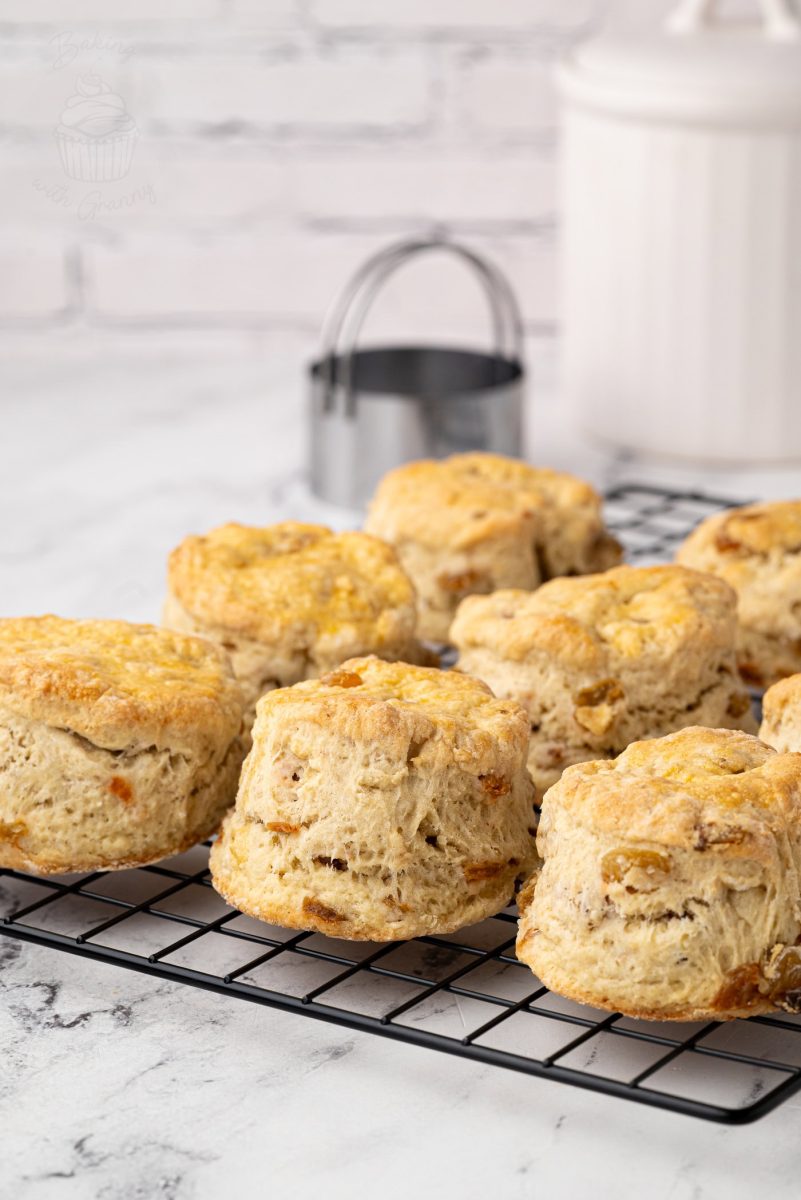

Fruit Scones
EQUIPMENT
INGREDIENTS
- 450 g Self-raising Flour
- Pinch of Salt
- 2 tsp Baking Powder
- 50 g Caster Sugar
- 50 g Block Margarine or Butter (cold, cubed)
- 100 g Sultanas
- 200 ml Milk (dairy, soya, coconut…)
- 100 ml Yoghurt or Sour Cream
- 1 Free-range Egg (beaten, for glazing)
INSTRUCTIONS
- Pre-heat your oven to 220°c (200°c for fan assisted oven or Gas Mark 7). Grease two baking sheets with a little excess butter/margarine and set aside.
- Sift the flour, salt and baking powder a large bowl, holding the sift up to allow some air into them. Gently stir in the sugar.
- Using the tips of your fingers, rub in the butter/margarine to the dry ingredients, again lifting as you do to allow air in. Continue until you have a sandy consistency.
- Stir in the sultanas and create a well in the middle.
- Whisk the milk and sour cream/yoghurt together before pouring into the well. Using your hands, gently bring the ingredients together to form a soft, slightly sticky dough.
- Turn out onto a floured work surface and gently knead together, before stretching the dough to about 2cm thickness.
- Using a round cutter of your choice, cut your scones out and place them onto your pre-greased baking sheets. The smaller your cutter the more scones you will get. Reform and stretch the dough as required to use all of the dough.
- Leave your scones to rest on the tray for about 10 minutes before brushing the tops with some beaten egg.
- Bake in your pre-heated oven for 10 minutes. If you are making smaller scones, keep a close eye on them as you may need to reduce the baking time to suit.
- Once cool enough to touch, transfer to a wire rack to cool completely or enjoy whilst still warm.
IMPORTANT NOTE:
All my recipes are developed using a digital scale and the metric system (grams and millilitres). Cup measurements are available as a conversion but these, unfortunately, won’t always be as accurate. For best results, I always recommend baking with a digital scale.
RECIPE NOTES:
- For full explanations on each ingredient and possible substitutions, see the Ingredients section above.
- For more tips for the perfect Fruit Scones, see Granny’s Top Tips above.
- Fruit Scones are best enjoyed the day they are baked, but the can be stored in an airtight container for a few days. You can also reheat them (in the microwave or toaster) to bring them back to life a little.
- Fruit Scones freeze very well. Simply pop them into a freezer bag and remove them one at a time, as required. Allow them to come to room temperature before serving. You can also reheat them (in the microwave or toaster) to bring them back to life a little.
- For tips on how to make your Fruit Scones vegan or free-from, see the Free-from & Vegan box below.
To make Fruit Scones, start by rubbing flour and margarine/butter together, then mix in sugar and sultanas. Add the wet ingredients a little at a time to form a soft dough. Gently stretch it out, cut into rounds, and bake until golden – simple, classic, and delicious.
Yes, you can absolutely freeze Fruit Scones. Just pop them in a freezer bag. Remove from the freezer whenever you fancy one and let it thaw before enjoying.
Free-from & Vegan:
Dairy-free: To make this a dairy-free Fruit Scones recipe, simply use a dairy-free milk, yoghurt & margarine for a dairy-free scone.
Nut-free: There are no nuts used in this Fruit Scone recipe, but as always, be sure to double-check your individual ingredients allergens list.
Vegan: As there is no egg in this Fruit Scone recipe, simply follow the dairy-free tips above to make these a vegan fruit scones recipe.
N.B. Any advice or suggestions to make recipes “free-from” or vegan are purely that – suggestions. Please be careful to double-check all ingredients individually, taking extra caution when serving to those with allergies & intolerances.
For more info on common food allergies, please see food.gov.uk | For more info on coeliac disease, please see coeliac.org.uk | For more info on a vegan diet, please see vegansociety.com

Originally published in September 2017. Updated in April 2025.
Thank you to Naomi Seiler for creating the updated photos.

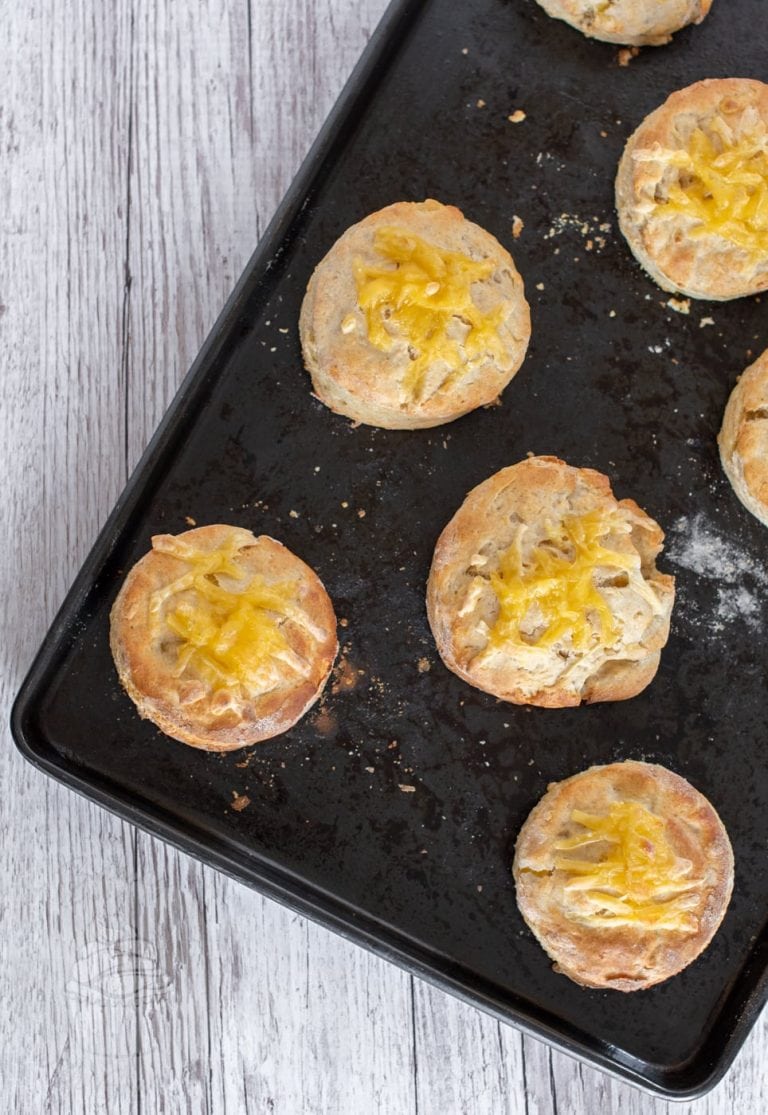


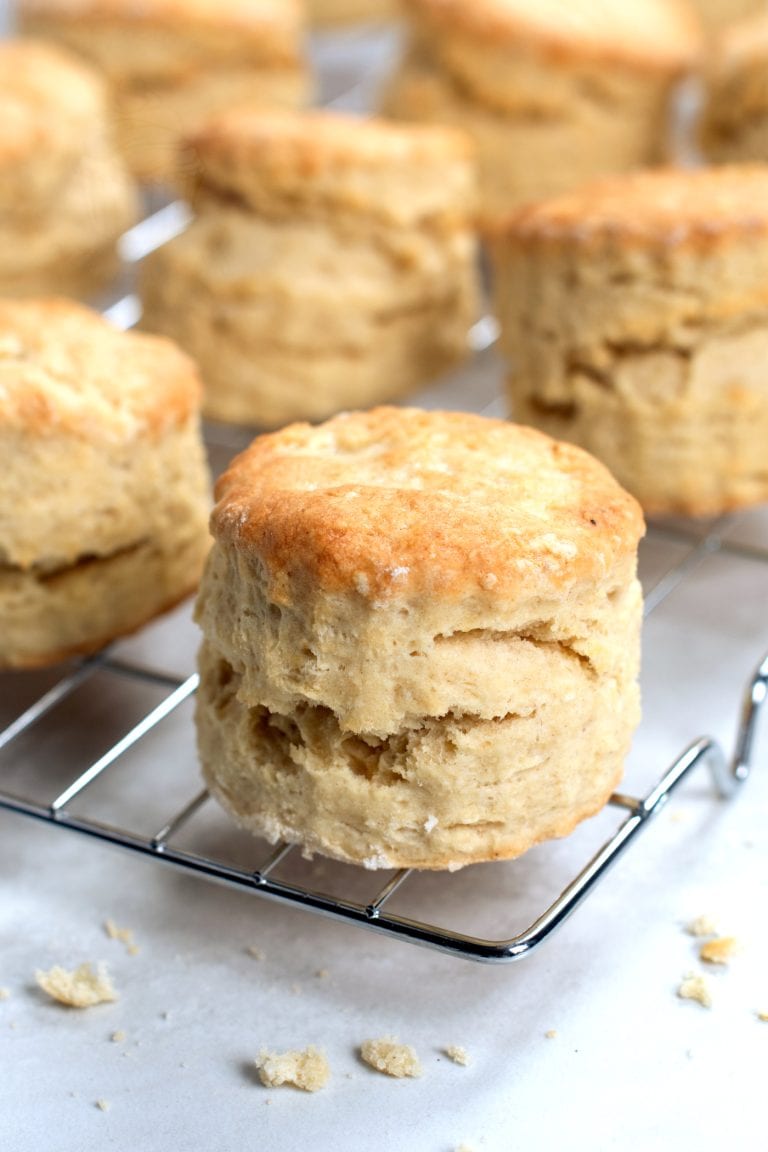

Silly me just making the scones and there it is the answer to my question ‘sugar added after rubbing in butter’
When do you add the sugar please ?
Can you use baking powder instead of bicarbonate- what is the difference in this recipe ?? Does it reach differently?
Absolutely delicious, finally been able to make scones I can eat. Froze a few and baked the following day, they were still perfect.
I do not have plain flower only all purpose……can I use this??